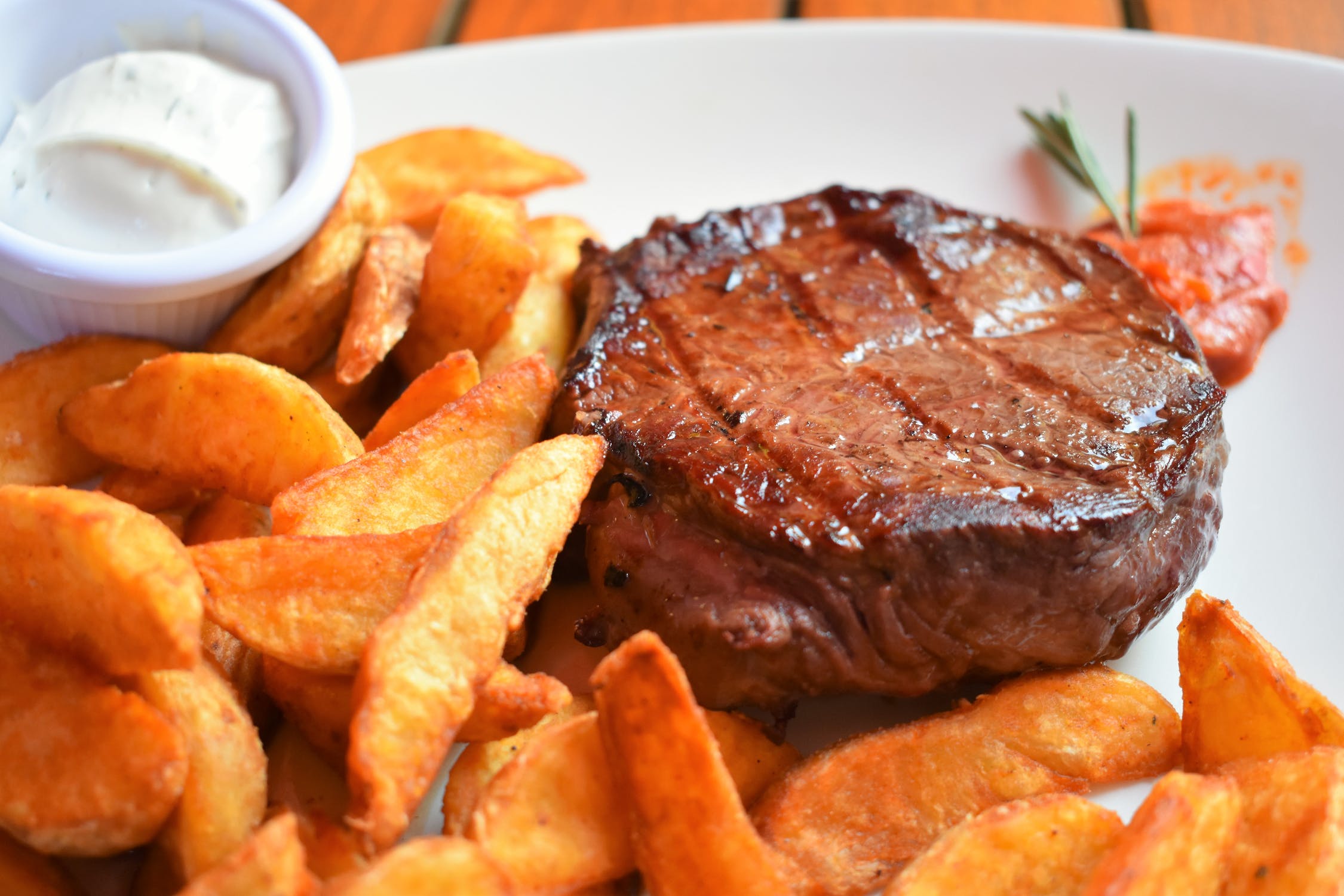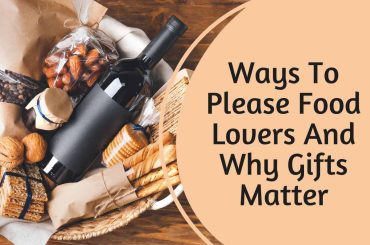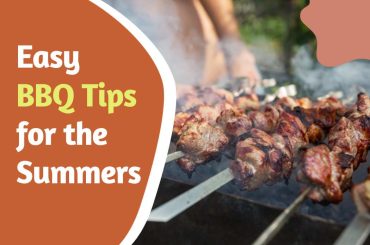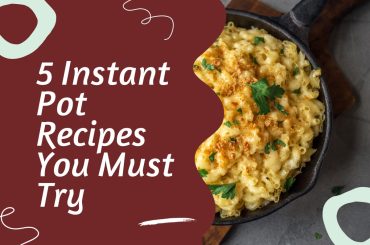Weight loss fads come and go. Be it the latest craze diet made of nothing but leaves, or the hottest new workout regimen claiming to sculpt you in three weeks, the get-fit-quick bandwagon is a hard one to resist. And the sad thing is, these schemes rarely work or are simply too over-the-top to stick with.
What if there was a way to lose weight, get in shape, and stay fit that didn’t involve a brand-new fad? A method of cutting down the kilos that relied on nothing but the fundamental processes of the human body? What if you simply maintained your body the way evolution meant it?
Enter Dr. Ted Naiman and his “Burn Fat Not Sugar” program. We say program, but it’s not really a regimen or workout or even a particular diet. As he says in his book The P:E Diet, it’s simply a way to “leverage your biology to achieve optimal health”.
In this article, we’ll be breaking down the core lessons, tips and tricks from Dr. Naiman’s work, including how your body processes calories, what to eat, what not to eat, and how to work out so that you can trigger your body’s natural fitness mechanisms.
Introduction
It’s a well-known fact that, when it comes to fitness and weight loss, 90% of the work is done in the kitchen (i.e. with your diet) and only 10% through working out. The Burn Fat Not Sugar system works the same way. In a nutshell, here is the two-step golden recipe:
- Maximize nutrient density by eating food that’s high in nutrition and has a low glycemic index (we’ll get to that in a second); and
- Exercise regularly, in short, high-intensity bursts.
That’s really all there is to it. If you’re confident you know how to do both of those, get out there and start working on your dream physique! But if you’d like to figure out the “why” behind the formula, and how exactly to follow the steps, read on.
About the glycemic index.
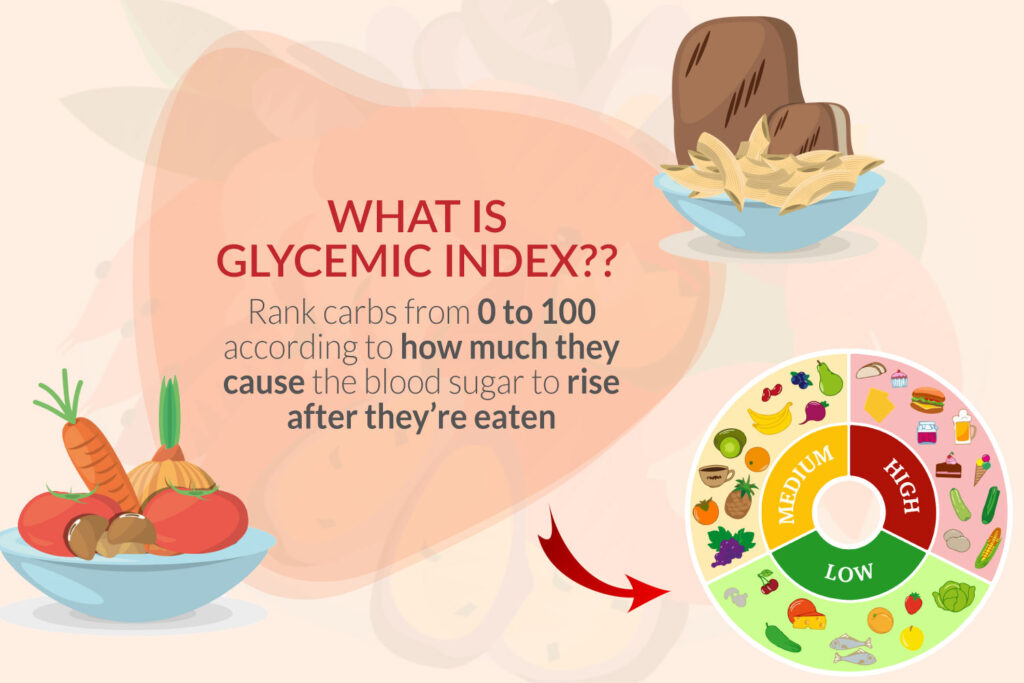
Just a few paragraphs back, we mentioned something called the glycemic index. This is important to understand why we recommend certain dietary choices and will help you evaluate your own meals going forward.
The glycemic index (GI) is a measurement of how much your blood sugar increases when you eat a certain food. It’s useful to promote blood sugar management. The GI value of a food will be determined by a host of factors, including the food item itself, how it was prepared, ripeness (where applicable), and the amount of processing it has undergone.
How your body manages energy.
Your body gets energy from food. The way that works is not what we’ll be covering in this article. Our focus is on how your body handles said energy once it has been produced. The reason we’re talking about this process is that one of the functions of your body’s energy management is storing energy as fat, and yes: we’re on a mission to shed away that fat.
Very simply, this is how your body manages energy gained from food:
- You eat food, which gets converted into energy in the form of glucose.
- Glucose enters your bloodstream (FYI: the amount of glucose in the bloodstream is your blood sugar level.
- Your cells start to absorb the glucose
- If there’s surplus energy, your body secretes the insulin hormone (insulin is the energy management hormone, and drives fat storage)
- Insulin converts calories into triglycerides and stores them as fat.
The reason your body secretes insulin is that it prefers homeostasis, i.e. the body prefers all vitals in the body (heart rate, temperature, hormone levels, etc.) to remain at or return to a constant level. When glucose is produced and dumped in the bloodstream, the pancreas pumps out insulin to return blood glucose levels to normal.
Remember the glycemic index? Here’s where it plays a big role. If your food has a high GI, your blood sugar level goes up a lot, and it goes up fast. This makes your homeostasis go into emergency mode. Detecting a sudden spike in blood sugar, the bloodstream is flooded by a large amount of insulin. This insulin rushes to store all the glucose into fat.
This is bad for a couple of reasons. First, you obviously start fattening up because your fat cells are being crammed with calories.
Second, your cells don’t have time to absorb the necessary energy they need to function. Long story short, you get hungry faster. That means you eat sooner and the whole process starts over again. It’s a vicious cycle.
Burning sugar vs. burning fat.
Your body is a machine, and all machines run on fuel. There are two types of fuel when it comes to generating energy for your body: sugar and fat. Both of these processes happen in your body. But based on your lifestyle, your body will be highly efficient at one of these at a time.
- Burning sugar
If you are a sugar burner, your body is efficient at burning glucose. The downside is that you’re not great at burning the fat stored in your system.
For example, when you wake up in the morning, you’re starving because your body isn’t that great at using its stored fat reserves to keep you going. You have your breakfast cereal and drink your sweet tea and your blood sugar spikes. You won’t burn fat because there’s enough energy coursing through your blood, and the resulting insulin is actually storing surplus calories as fat. Later, when the insulin does its job and cleans up your blood’s stray glucose, you’re hungry within a few hours. You’re craving carbs again because that’s what you’re used to. Over the day, you’ll need to eat multiple meals and have snacks in between, and your blood sugar levels go up and down constantly. That’s the life of a sugar burner.
Burning sugar is bad for you on multiple levels. First, you’re eating an exorbitant number of calories. Second, the constant presence of insulin in your system is devastating; tissue damage from glycation will seriously affect your health. Thirdly, you’re starving on a cellular level because all the energy got crammed into your fat tissue. And finally, you won’t ever actually lose fat because your fat is constantly either being stored or depleted; when you’re a sugar burner you’ll always be storing fat on your body.
- Burning fat
Fat burners have adapted their bodies to efficiently burn stored fat. The great thing about this arrangement is that a fat-adapted body can seamlessly go from burning dietary fat to burning stored body fat.
If you’re a fat burner, you can effortlessly go back and forth between these two fat sources. You can even skip entire meals without feeling low on energy because your body knows how to use its stored energy.
As a bonus, fat burners have less difficulty losing weight. You would feel hungry less often, and you eat less overall. As a fat burner, you would also be able to work out for longer, because you don’t depend on blood glucose for energy. Fasting is easier too.
Fat burning leads to a cycle of eating less and exercising more that will help you smash your fitness goals. All things considered, burning fat is the simplest biologically proven way to lose weight and stay in shape.
What to eat, and what not to.
We’ve arrived at the million-dollar question. Now that you know how your body processes, stores and uses the food you eat, it’s time to see what those foods are.
First things first. Let’s talk about macronutrients. Macronutrients are essential elements required by your body in different amounts. There are three macronutrients: carbohydrates, fat, and protein.
The way your body handles each macronutrient is slightly different, and depending on the macronutrient this can be positive or negative. And it all has to do with each element’s glycemic index.
We’ll be talking about each macronutrient, going from the most beneficial to the least.
- Fat – eat a lot!
Fat is bad, right? Wrong!
The idea that fat equals weight gain is a modern scientific myth that has long since been debunked many times over. On the contrary, fatty foods are your best friend when it comes to weight loss. We even have real-world proof that eating mostly fat keeps you from getting fat, which we’ll discuss in a later section. For now, here’s why the major portion of your diet should be fat.
Fat has a glycemic index of zero. That means when you eat fatty food, your blood sugar level doesn’t go up at all. The absence of blood sugar spikes means there won’t be a flood of insulin in your system. The glucose in your bloodstream has ample time to get absorbed by cells that will put the energy to use. The energy won’t get pointlessly diverted to your fat cells. As an added bonus, you won’t get hungry for a good while!
The only thing to remember is that you can’t overdo it. Excess calories are still going into your fat deposits. As long as you don’t eat more than the appropriate amount of calories, you can put your fat-gaining worries to rest.
- Proteins – eat a bit.
Proteins are incredibly important for your body. It’s recommended that each meal contain at least 20 to 30 grams of protein, with good reason. Proteins are the building blocks of your organs, skin, and even hormones.
Here’s the thing about protein: they have a glycemic index of zero. That’s great news, but there’s a catch. Your body doesn’t have a way to directly store excess protein you get from food. The excess is converted to glucose in your liver. And that glucose can unfortunately still trigger insulin and all the fat-gain that comes with it.
The solution is simple. While having fat as the main component of your food by percentage, eat a moderate amount of protein. Balance this with your recommended caloric intake and keeping in shape should be a breeze.
- Carbohydrates – don’t eat!
Dr. Naiman, the author of Burn Fat Not Sugar, says, “carbs are evil!” This macronutrient has an incredibly high glycemic index, causes insulin spikes, and in a sinister twist, can even cause you to get addicted! That’s right, eating carbs releases opioids. If you’ve ever found yourself devouring multiple servings of pasta or mac and cheese, now you know why. Carbs really are the villains of the nutrition world.
Let’s talk about the glycemic index of carbs. Grains have a GI of around 50 to 70. Starches, like potatoes, have a GI of around 80. One shocking statistic quoted by Dr. Naiman is that eating just two slices of white bread raises your blood sugar level more than a snickers bar!
The only real solution is to cut carbs out of your life entirely. That’s easier said than done. Here’s what we recommend: when you’re starting out, don’t try to give up carbs as a whole. That just won’t work. Instead, give up one type of carbs. For example, start by saying, “I won’t eat bread”. That way, it’s easier to compartmentalize and stay away from the temptation to stuff your face with carbs. Good luck!
Why sugar makes you fat?
You’ve seen what we had to say about carbs. But why are they so bad for us? Why can’t the body handle carbs as effortlessly as fat and protein? Turns out, the answer is evolution.
Humans as we know ourselves today have been on this planet for about 5 million years. But we’ve only had the knowledge to produce food in unimaginably large amounts for around 10,000 years, thanks to the agricultural revolution. This means that the evolutionary traits that we picked up over those millions of years have not changed yet. 10,000 years isn’t nearly long enough.
What are these evolutionary traits? For starters, our biology was designed to eat food with a low glycemic index. For 99.9% of our species’ history, we ate meat, eggs, green leaves, nuts, and small fruits.
The good news: you can survive on a no-carb diet. We’ve done it for millions of years.
We also abided by a seasonal cycle. In the summer, when plants and carbs were abundant, our ancestors loaded up on calories for the winter. When we eat carbs, our bodies are programmed to store those calories as fat in anticipation of a winter season with almost no food.
The bad news: these days, when you eat carbs, your body still stores the calories as fat. But the thing is, we no longer have winters where we go hungry for days. You keep eating, and your body keeps storing it in your fat cells.
We mentioned in a previous section that we have real-life examples of how carbs ruin health. You only have to look at certain indigenous peoples for proof. Native American Indians, Pima Indians, Australian Aborigines, and many more tribes have been documented to go from fit to fat post-contact with the outside world. They used to be lean, strong physical specimens surviving on a diet mostly of meat. With the introduction of agricultural practices and fast food, many such groups are facing what can only be called a health crisis.
While we’re on the topic of what our ancestors ate, we have to talk about fruits. Everyone agrees that fruits are good. They’re said to be low in calories and delicious to boot. Except that’s not the complete picture. See, the fruits we eat today have been genetically modified over centuries to be as fat, juicy, and sweet as possible. That’s not really what humans ate all those millennia ago. Fruits were rare, and even what fruits we found were tiny in size. So remember: when you scarf down fruit from the supermarket, you’re eating food that your body wasn’t designed to process effectively.
In summary, the lesson here is that you just shouldn’t eat carbs. It’s that simple.
Nutrient density: eat a lot while eating less.
We don’t eat food just for a quick calorie boost. There are many essential micronutrients our bodies can’t produce. Here we run into a problem. How do we get all the nutrients we need, while still eating as few calories as possible?
The answer lies in nutrient density. Nutrient density refers to the amount of beneficial nutrients in a food product in proportion to its energy content. Here’s why that matters:
Humans eat to a tightly regulated protein and micronutrient satiety drive. When you eat food with a high nutrition density, i.e. food that’s filled with the brim with good nutrients, you feel full faster. You’ll have consumed all the nutrients you need while having eaten fewer calories overall. On the other hand, when you eat empty calorie carbs and fats (foods with a low nutrient density) you overeat to compensate for the nutrients and proteins you aren’t getting in adequate amounts. (And like we talked about in the previous section, this combo of carbs and fats signals our biology to start fattening up.)
Some high nutrient density foods:
- Animal products (meat, eggs, butter, etc.)
- Leafy greens
- Fruits like strawberries and pomegranates
- Nuts
Avoid low nutrient density foods like these:
- Grains (rice, etc.)
- Starches (potatoes and other yams)
- Sugar
- Lentils and legumes
In short, when your food has a high nutrient density, you fill up fast because your body gets what it needs. When your food has a low nutrient density, you have to eat more to meet your nutritional needs.
Workouts that burn fat, not sugar.
Even though it’s the most important part of the equation, your diet is just one part of the weight loss process. Once you have your fat burning diet set up and going smoothly, you might want to consider adding some exercise to the mix to speed up your journey.
Here are some general tips for the optimal workout:
- Aim for the highest level of exertion, regardless of how brief that is.
For example, sprinting at your maximum pace for a few minutes is better for your body in every way than jogging for an hour. That’s why just walking isn’t exactly great exercise.
Don’t waste an hour on a treadmill. Instead, try something high exertion like skipping, jumping jacks, or cycling even if it’s just for five minutes.
- Don’t forget resistance
Resistance training, or weight training, would be invaluable for you in the long run. This is because weight training builds muscle mass. And by building muscle mass you will speed up your metabolism and burn more calories, even passively. For example, if you gain just five pounds of muscle mass, you’ll burn an extra 300 calories a night, doing nothing but sleeping!
The same advice as before applies: go for maximum exertion. Try not to hit a fixed number of reps. Instead, do as many reps as you can, and then do three more. Then do two more. Keep going till you are spent, and you can rest knowing you had a great workout.
- Try bodyweight exercises
You don’t have to go to the gym to have a killer workout. You can burn fat right at home with a few bodyweight exercises. Here are some bodyweight exercises that you can add to your home workout:
- Vertical pull
- Vertical push
- Horizontal pull
- Horizontal push
- Dip
- Squat
- Calf raise
In conclusion
The reason why so many people are overweight is that our modern diet is not what we’re biologically programmed to eat.
If you want to easily lose weight, eat more fats and protein, and try to cut carbs out entirely. Add some exercise into the mix and you’ll have achieved your dream fitness level in no time.
What are your experiences with weight loss? Have any personal tips to share? Let us know in the comments!

